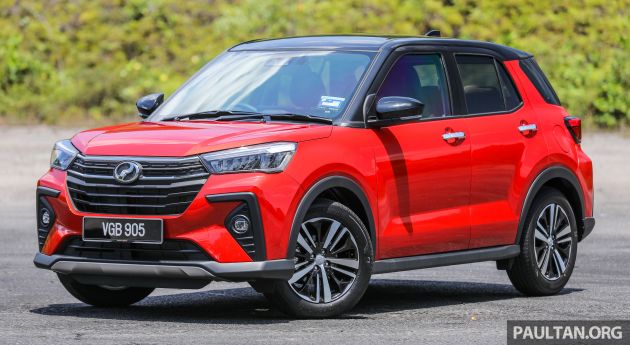Daihatsu plans to add 10 new models for emerging markets by 2025, continue tailoring cars for Malaysia
Daihatsu is stepping up efforts to produce cars tailored to Southeast Asian nations such as Malaysia and Indonesia as it attempts to ramp up its presence in emerging markets. A perfect example is the Perodua Ativa, which is based on the Daihatsu Rocky.
While the SUV’s overall structure is the same as that of the Japanese model, quite a few aspects of the Malaysian model – which debuted in March – have been reworked to meet the needs of local drivers, as the Nikkei reports.
These were gleaned from surveys as well as from running trials with evaluation units, according to the man who headed the development of the Rocky. “As Malaysia has lots of expressways, cars often run at high speed. We had to figure out how to deal with that,” said Nobuhiko Ono, deputy chief officer at Daihatsu’s research and development management division.
Ono studied feedback on local drivers’ needs and decided to improve the braking response of the vehicle, concluding that drivers would feel less secure if the brakes responded softly when the pedal was pressed.
Another unique feature is the inclusion of dedicated lock/unlock buttons, which is not available on the Rocky. Mounted on the centre console next to the handbrake lever, these allow the person in the passenger seat to lock the doors if the driver needs to step out of the car, preventing anyone from jumping in and attempting to carjack the vehicle. “The feature was added based on a suggestion from local staffers who tested trial models,” Ono said.
Changes were also made to the suspension, in the case of the Ativa as well as the Rocky that was introduced in Indonesia at the end of April. For the Indonesian Rocky, Daihatsu used the same market survey and trial production routines as in Malaysia, and the suspension was reworked to perform well on rough roads, taking into account that many of the country’s roads are still unpaved.



The new models got off to strong starts, with sales reaching 4,000 to 5,000 units per month in Malaysia alone. Indonesian production of the model will also be exported to 50 other emerging markets, including in Southeast Asia and Latin America, in Toyota Raize form.
Ono also revealed how he turned down the design team’s repeated call for a bigger body when development of the SUV began sometime in 2017. Stressing on the automaker’s expertise in minicars, Ono believed that it should use its experience in that field to differentiate its products from those of other manufacturers.
As a result, the Rocky measures in at just under 1.7 metres wide and four metres long, making the SUV only slightly larger than the maximum for mini-vehicles under Japanese standards (the Ativa is slightly longer, wider and also taller, the former as a result of its bumpers, and the latter due to its Malaysian-specific suspension).
“Women and the elderly avoid SUVs because they think it is hard to maneouvre them in tight spots. We thought small SUVs could appeal to them,” Ono said. He was proved right. The Rocky won orders for 10,500 units – roughly five times more than expected – in the first month after its release in Japan in November 2019.
The automaker is hoping to continue that success by accelerating its efforts to develop more vehicles for emerging markets, planning to add 10-odd models by 2025. This will be aided by its fast, low-cost production method, working with its Daihatsu New Global Architecture (DNGA) modular compact car platform and a concept of “small doubles as big,” which has helped cut development time and cost by 30% and allowed models to be deployed in faster fashion, as in the case of the Rocky/Ativa.
While the brand is aiming to make as much progress as possible before vehicle electrification takes hold in emerging countries, the report adds that Daihatsu has plans to utilise its DNGA platform – which is connected, autonomous, shared and electric (CASE) ready – for the development of electrified models. Timelines for these were however not revealed, although it was previously stated the company was planning to introduce a hybrid version of the Rocky later this year.
The post Daihatsu plans to add 10 new models for emerging markets by 2025, continue tailoring cars for Malaysia appeared first on Paul Tan's Automotive News.
from Paul Tan's Automotive News
Read The Rest:paultan...





Post a Comment